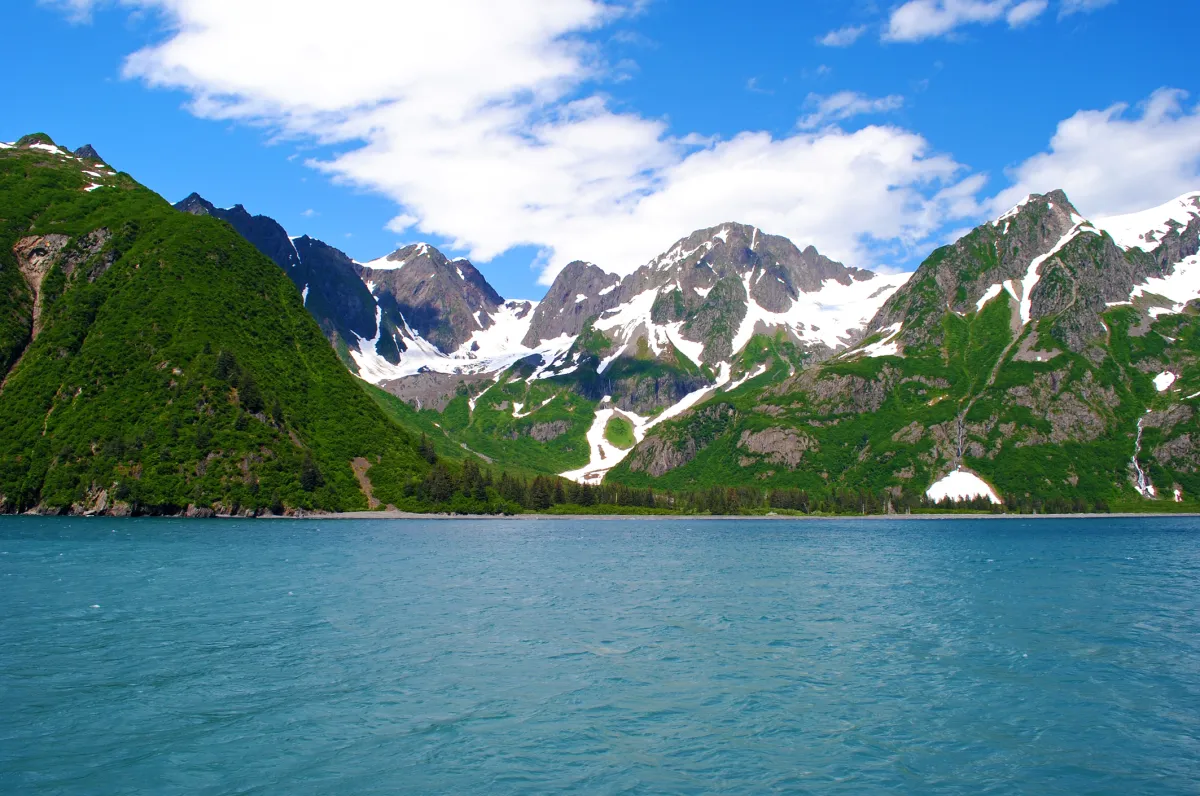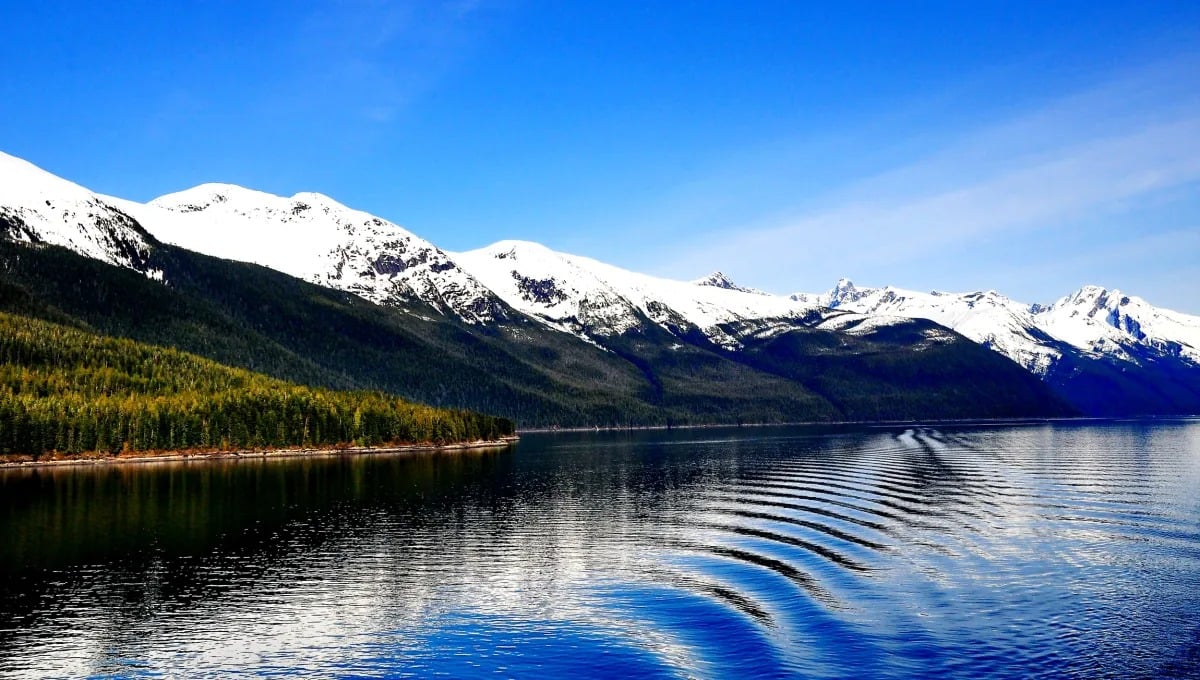
Alaska is home to eight national parks, each offering an unique journey into Alaska’s vast wilderness. From the remote peaks of Gates of the Arctic to the calving glaciers of Glacier Bay, the national parks of Alaska are full of wonder, and they make excellent destinations for your Alaskan adventure.
To help plan your trip, this guide will walk you through a short introduction of each of the national parks. Because these parks are so diverse, we’ve ranked them based on visitor numbers in 2019 (we’re using pre-Covid numbers, as tourism in Alaska is still slowly returning following the 2020 pandemic).
As you plan your trip, pay close attention to the accessibility of each of these parks and the distance required to reach them. Most of the national parks in Alaska can only be accessed by bush plane or boat, so they will require a bit more planning than simply driving into the park. Regardless of the path you chose to take or the park you chose to visit, by including a national park on your itinerary, you are guaranteeing a trip filled with true Alaskan adventure.
1. Glacier Bay National Park and Preserve
Visitors in 2019: 672,087
Introduction: An ever-evolving tableau of ice, water, and wildlife, Glacier Bay offers a seascape of tidewater glaciers. This is Alaska’s most popular national park and for good reason – it is one of the key destinations for cruise ship travel along the Inner Passage. Most travelers see the park from the comfort of their ship, but you can also book remote camping sites in the park or book a private boat or kayak adventure.
How to Get There: This park is only accessible by water. You can fly to Juneau, then connect to Gustavus via a smaller plane or ferry to access the main visitor center, then book a boat tour to go further into the park.
Driving in the Park: Predominantly water-based, so no roads lead through the park.
Activities: Cruise amidst glaciers, kayak alongside humpbacks, and immerse in wilderness camping.
2. Denali National Park and Preserve
Visitors in 2019: 601,152
Introduction: A trip to Alaska is not complete until your venture up to Denali National Park! Denali's vast expanse boasts North America's highest peak and the park has some of the best wildlife viewing opportunities in the entire country. =
How to Get There: One of the few parks in Alaska you can access by road, you can get to Denali by driving 4-5 hours from Anchorage via AK-3 N (George Parks Highway). If you’re driving in winter, exercise extreme caution due to icy conditions.
Driving in the Park: Private vehicles have access to the first 15 miles up to Savage River. Park buses serve areas beyond throughout the summer season. You can also hike into the park on a variety of trails or take a flightseeing tour above the park.
Activities: Marvel at Mount Denali (tallest mountain in North America), enjoy bus tours to spot diverse wildlife, and embark on hiking and backpacking quests.
3. Kenai Fjords National Park
Visitors in 2019: 356,601
Introduction: A beautiful confluence of ice, ocean, and mountains, Kenai Fjords sings a silent song of glaciers and deep-blue waters. This is a perfect stop if you are visiting the Kenai Peninsula, and the park is best enjoyed on a sightseeing cruise departing from Seward.
How to Get There: A 2.5-hour drive from Anchorage on the scenic Seward Highway (AK-1). You can drive to the main park entrance, but much of the park is only accessible via hiking or boat.
Driving in the Park: Only Exit Glacier has road access (where the main visitor center is located and trail to Exit Glacier).
Activities: Explore Exit Glacier by foot along a historic trail, journey through fjords on boat cruises from Seward, or kayak amidst icebergs.
4. Katmai National Park and Preserve
Visitors in 2019: 84,167
Introduction: Home to the iconic Coastal Brown Bear (also known as Grizzlies) and the Valley of Ten Thousand Smokes, this park is a favorite for photographers, fishermen, and avid hikers. Katmai is located on the Alaskan Peninsula, and inaccessible by road, but for those looking for a remote Alaskan experience, you can’t beat a few days of camping amongst bears in this iconic park!
How to Get There: Accessible mainly via float planes from Anchorage, Homer, Kodiak, or King Salmon. Multi-Day boat tours are also available from Kodiak.
Driving in the Park: Only accessible by boat and plane.
Activities: Watch brown bears at Brooks Falls, explore the Valley of Ten Thousand Smokes, fish for salmon in the Brooks River, go bear viewing at Hallo Bay, and camp under an untouched Alaskan sky.
5. Wrangell-St. Elias National Park and Preserve
Visitors in 2019: 74,518
Introduction: This is the US's largest national park, featuring grand glaciers, spiraling peaks, and historic mining sites. This is a great park to visit for those who love history, hiking, and a bit of adventure to get there! Much of the scenery and wildlife is similar to Denali National Park, but due to its remoteness, this park receives very few visitors, allowing you to experience Alaska in solitude.
How to Get There: You can drive to Copper Center near the main visitor center in 4 hours from Anchorage. From there, you can access the park from gravel roads or you can take a scenic plane ride in.
Driving in the Park: McCarthy Road provides park access via rough, gravel roads (closed in the winter); many visitors travel to the park via shuttles for McCarthy and Kennecott trips.
Activities: Delve into Kennecott Mines, enjoy flightseeing, or challenge yourself with mountaineering or backpacking.
6. Lake Clark National Park and Preserve
Visitors in 2019: 17,157
Introduction: A mosaic of turquoise lakes, active volcanoes, and undisturbed wilderness, Lake Clark is by far one of the most favorite destinations for Alaskan residents. This is a great park for a multi-day kayak trip, guided bear tour, or backpacking expedition.
How to Get There: Popular routes involve bush planes from Anchorage heading to Port Alsworth or bush flights from Homer. Alternatively, you can also visit the park via boat from Homer on a one-day tour.
Driving in the Park: No road access.
Activities: Admire landscapes from Proenneke's Cabin, traverse volcanic terrains, and spot brown bears along the beach and rivers.
7. Kobuk Valley National Park
Visitors in 2019: 15,766
Introduction: An Arctic gem, presenting the unusual blend of vast sand dunes amidst icy settings, this is the go-to park for photographers and wildlife enthusiasts interested in seeing some of the rarest animals in Alaska and watching a caribou migration.
How to Get There: Charter flights are available from Kotzebue or Bettles.
Driving in the Park: No road access.
Activities: Hike the Great Kobuk Sand Dunes and witness the impressive caribou migration. Spot arctic wildlife, including muskox, arctic foxes, and wolves.
8. Gates of the Arctic National Park and Preserve
Visitors in 2019: 10,518
Introduction: Untouched Arctic paradise without trails or roads, offering pure wilderness and isolation to the hardy adventurer. This park is best enjoyed on a multi-day trip, and is only recommended for experienced hikers and backpackers, as there are limited marked trails and the terrain can be intimidating.
How to Get There: Charter flights are the route to go, usually from Fairbanks to Bettles or Anaktuvuk Pass.
Driving in the Park: Roads are absent, preserving its pristine essence.
Activities: Dive deep into the wilderness, hike off-trail, or raft on remote rivers.
Discovering Alaska Beyond the Parks
While the national parks of Alaska are the crown jewels of its natural beauty, the story is far from complete. The state also offers a wealth of national monuments, historic sites, and wildlife refuges that are also equally inviting to visitors. Throughout the state, you will also find excellent state parks and national forest lands. From well-marked trails to true backcountry, there is an adventure awaiting everyone in the magnificent Last Frontier.

